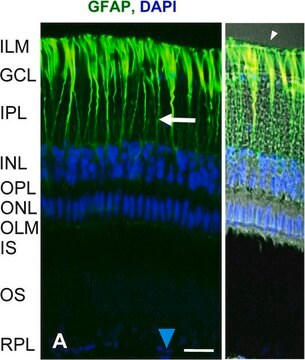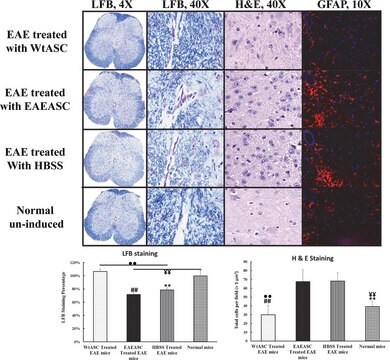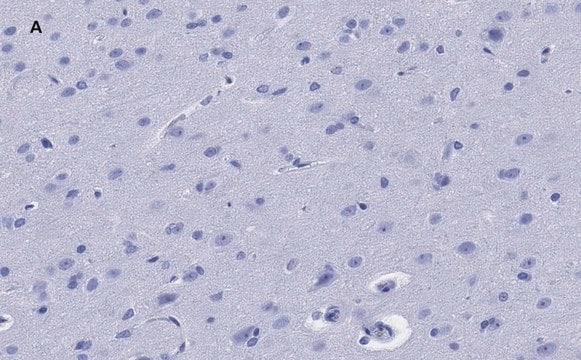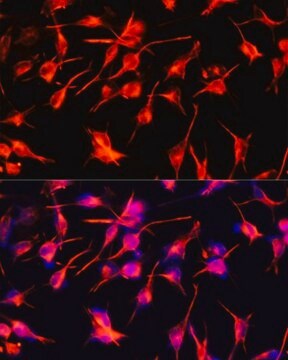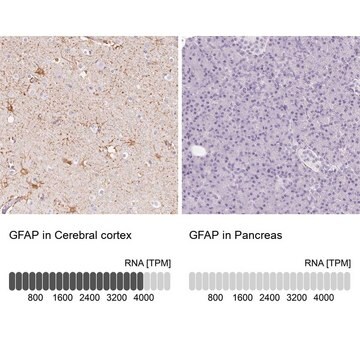G9269
Anti-Glial Fibrillary Acidic Protein antibody produced in rabbit
IgG fraction of antiserum, buffered aqueous solution
Sinónimos:
GFAP Antibody Sigma - Anti-Glial Fibrillary Acidic Protein antibody produced in rabbit, Gfap Antibody Sigma, Anti-GFAP
About This Item
Productos recomendados
biological source
rabbit
Quality Level
conjugate
unconjugated
antibody form
IgG fraction of antiserum
antibody product type
primary antibodies
clone
polyclonal
form
buffered aqueous solution
species reactivity
rat, human
packaging
antibody small pack of 25 μL
technique(s)
immunohistochemistry (formalin-fixed, paraffin-embedded sections): 1:80 using brain sections
microarray: suitable
western blot: 1:500 using brain extract
UniProt accession no.
shipped in
dry ice
storage temp.
−20°C
target post-translational modification
unmodified
Gene Information
human ... GFAP(2670)
rat ... Gfap(24387)
General description
Specificity
Immunogen
Application
- immunohistochemical staining at a working dilution of 1:400 using rat brain sections
- immunohistochemical staining of human brain tumor tissue specimens to identify the cells expressing AQP4 (Aquaporin-4)
- immunofluorescence using brain section from mice
Biochem/physiol Actions
Physical form
Storage and Stability
Disclaimer
¿No encuentra el producto adecuado?
Pruebe nuestro Herramienta de selección de productos.
Related product
antibody
Storage Class
12 - Non Combustible Liquids
wgk_germany
WGK 2
flash_point_f
Not applicable
flash_point_c
Not applicable
Certificados de análisis (COA)
Busque Certificados de análisis (COA) introduciendo el número de lote del producto. Los números de lote se encuentran en la etiqueta del producto después de las palabras «Lot» o «Batch»
¿Ya tiene este producto?
Encuentre la documentación para los productos que ha comprado recientemente en la Biblioteca de documentos.
Nuestro equipo de científicos tiene experiencia en todas las áreas de investigación: Ciencias de la vida, Ciencia de los materiales, Síntesis química, Cromatografía, Analítica y muchas otras.
Póngase en contacto con el Servicio técnico
